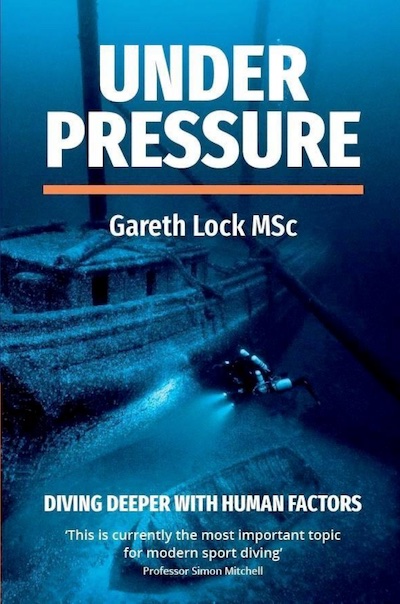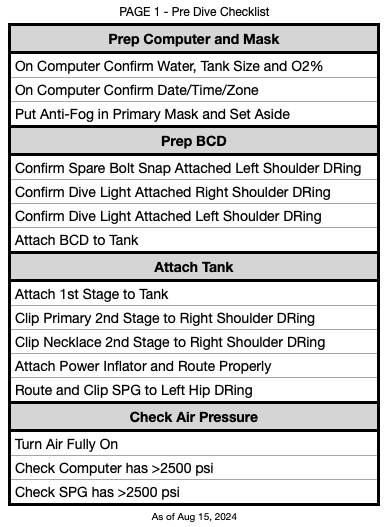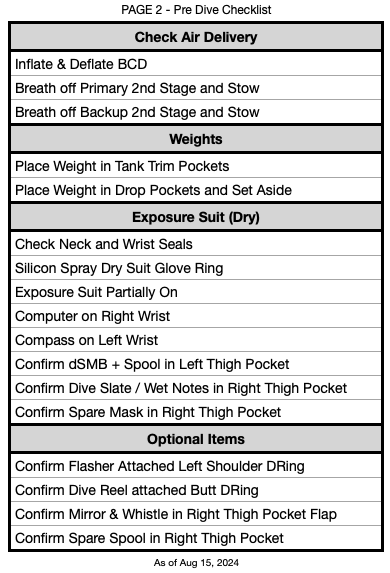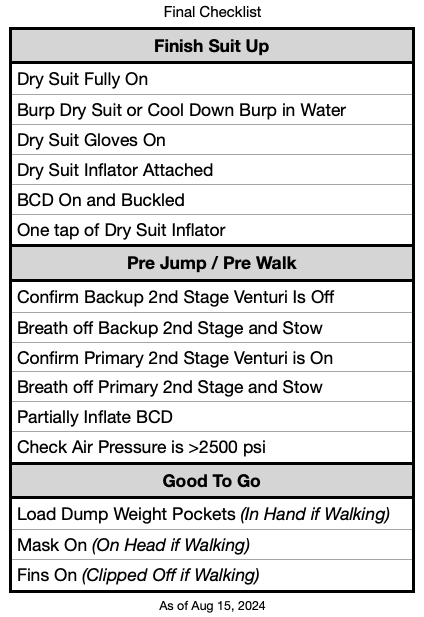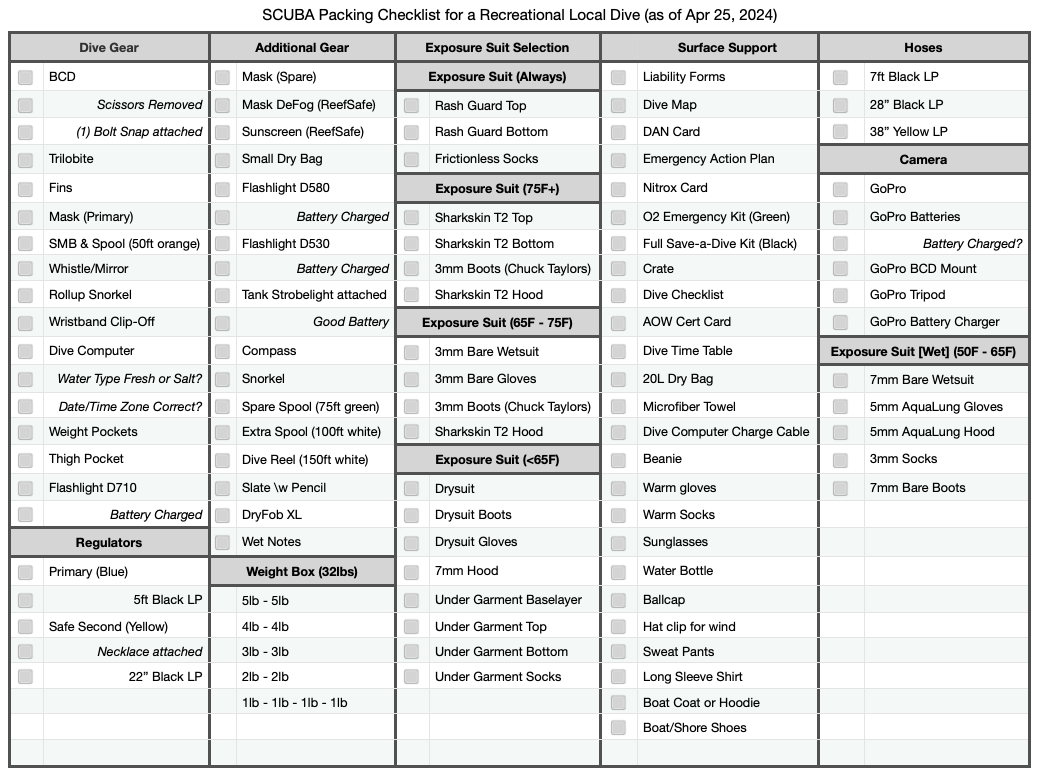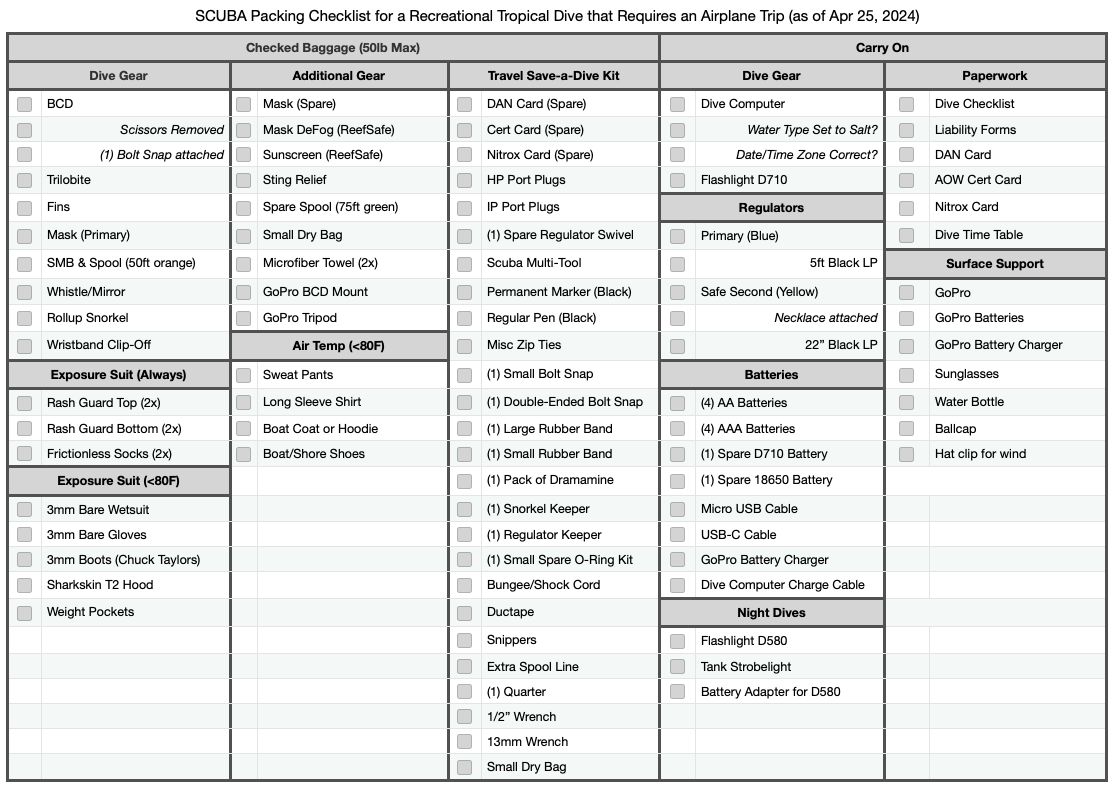I was introduced to the concept of checklists in diving when I read Gareth Lock's book "
Under Pressure - Diving Deeper with Human Factors".
The basic concepts can be read about on Gareth's blog [
here] and [
here]. It's an indisputable fact within human sciences that checklists reduce errors and ultimately save lives...and since my life is important...I use them. If a checklist is not used, and a successful dive happens, it can start the normalization of deviance/risk because the outcome was good, despite the process being flawed.
The Basics:
- Standardization is fine, but customized to you is better
- 5-8 lines in each section, each with no more than 5-8 words
- No font size below 0.10in (2.5mm)
- Use plain prompting words, not full instructions
- Split the list into related sections for cognitive reasons
- Decouple checklists to allow time between sections
- If interrupted, stop and redo that section
My Pre-Dive Checklist
I built this checklist over ~30 real dives. I had a piece of paper and a pen next to me and I would follow the previous dive checklist until my brain told me to deviate. Usually because it felt more natural to do something at a certain point in the pre-dive. I then ran it again the next dive and modified. It stabilized after about the 25th dive and I've been using this version ever since (with the occasional minor change as needed). It is now laminated on a half sheet of 8x11 piece of paper with the font at 14pt. I complete page 1 and the flip over the paper. I can then pause and do something else or continue on to Page 2. You might be tempted to make it large and on a full sheet of 8x11, but don't. I've learned that the smaller the sheet the better (but no less than 14pt font) and more likely you are to use it. Large format checklists get left behind and not used.
My Final Checklist
This was purposely designed to be as small as possible, because now is not the time to fix anything. Any "confirm" checks are there as a backup to the pre-dive check and is something that would be immediately life-threatening when I hit the water. Primarily, to identify if anyone has touched my tank valve while trying to be helpful. This is done BEFORE I walk forward on the boat or begin walking down to the water. This is NOT an at the waters edge checklist where using one would be impractical.
My Packing List
There are too many pieces parts for scuba diving to just toss things into the back of the truck and think you have it all. I've been on many dives where folks show up at the dive location having forgotten something. That doesn't happen if you have a packing checklist. I print one of these before EVERY trip and then check the box when it has gone into the dive bag, the dive crate or placed in the truck. Part of using a checklist is using it correctly...use the boxes. Write on it. I then put the paper into a protective sleeve, and it goes with me on the trip to use as what I need to come home with.

